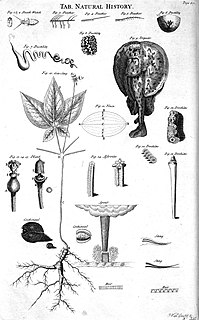
Lumberjacks are mostly North American workers in the logging industry who perform the initial harvesting and transport of trees for ultimate processing into forest products. The term usually refers to loggers in the era when trees were felled using hand tools and dragged by oxen to rivers. The work was difficult, dangerous, intermittent, low-paying, and involved living in primitive conditions. However, the men built a traditional culture that celebrated strength, masculinity, confrontation with danger, and resistance to modernization.

Quilcene is an unincorporated community and census-designated place (CDP) in Jefferson County, Washington, United States. The population was 596 at the 2010 census.

Olympic National Park is a United States national park located in the State of Washington, on the Olympic Peninsula. The park has four regions: the Pacific coastline, alpine areas, the west-side temperate rainforest, and the forests of the drier east side. Within the park there are three distinct ecosystems, including subalpine forest and wildflower meadow, temperate forest, and the rugged Pacific coast.

Natural history is a domain of inquiry involving organisms, including animals, fungi, and plants, in their natural environment, leaning more towards observational than experimental methods of study. A person who studies natural history is called a naturalist or natural historian.
The Hoh or Chalá·at are a Native American tribe in western Washington state in the United States. The tribe lives on the Pacific Coast of Washington on the Olympic Peninsula. The Hoh moved onto the Hoh Indian Reservation, 47°44′31″N124°25′17″W at the mouth of the Hoh River, on the Pacific Coast of Jefferson County, after the signing of the Quinault Treaty on July 1, 1855. The reservation has a land area of 1.929 square kilometres and a 2000 census resident population of 102 persons, 81 of whom were Native Americans. It lies about half-way between its nearest outside communities of Forks, to its north, and Queets, to its south. The river is central to their culture. The main resources they used included cedar trees, salmon, and the nearby vegetation. They also traded and bartered with other tribes closer to Eastern Washington, near the Plateaus and Great Plains.

The natural environment or natural world encompasses all living and non-living things occurring naturally, meaning in this case not artificial. The term is most often applied to the Earth or some parts of Earth. This environment encompasses the interaction of all living species, climate, weather and natural resources that affect human survival and economic activity. The concept of the natural environment can be distinguished as components:

The National Museum of American History: Kenneth E. Behring Center collects, preserves, and displays the heritage of the United States in the areas of social, political, cultural, scientific, and military history. Among the items on display is the original Star-Spangled Banner. The museum is part of the Smithsonian Institution and located on the National Mall at 14th Street and Constitution Avenue NW in Washington, D.C.
Olegas Truchanas was a Lithuanian-Australian conservationist and nature photographer.

The Museum of Chinese in America is a museum in New York City which exhibits Chinese American history. It is a nonprofit 501(c)(3) education and cultural institution that presents the living history, heritage, culture, and diverse experiences of Chinese Americans through exhibitions, educational services and public programs. Much of its collection was damaged or destroyed in a fire in January 2020. After being closed for more than a year following the fire, the museum reopened to the public on July 15, 2021.
Michael Forsberg is conservation photographer who has dedicated 25 years of his life to photograph America's Great Plains, once one of the greatest grassland ecosystems on Earth. He is best known for his images of the Great Plains, wildlife, landscapes, sandhill cranes, and watersheds. His images have been featured in publications including National Geographic, Audubon, Outdoor Photographer, and the Nature Conservancy.

The Natural History Museum of Los Angeles County is the largest natural and historical museum in the western United States. Its collections include nearly 35 million specimens and artifacts and cover 4.5 billion years of history. This large collection is comprised not only of specimens for exhibition, but also of vast research collections housed on and offsite.

Waynesboro is a city in Burke County, Georgia, United States. The population was 5,766 at the 2010 census. The city is the county seat of Burke County. It is part of the Augusta, Georgia metropolitan area.
Eiko Otake and Takashi Koma Otake, generally known as Eiko & Koma, are a Japanese performance duo. Since 1972, Eiko & Koma have worked as co-artistic directors, choreographers, and performers, creating a unique theater of movement out of stillness, shape, light, sound, and time. For most of their multi-disciplinary works, Eiko & Koma also create their own sets and costumes, and they are usually the sole performers in their work. Neither of them studied traditional Japanese dance or theater forms and prefer to choreograph and perform only their own works. They do not bill their work as Butoh though Eiko & Koma cite Kazuo Ohno as their main inspiration.
Stephen Alvarez is an American photojournalist. He is founder and president of the Ancient Art Archive, a global initiative to record, preserve, and share high-resolution images of ancient artwork. Throughout his career, he has produced global stories about exploration and culture. He became a National Geographic photographer in 1995. His pictures have won awards in Pictures of the Year International and Communications Arts and have been exhibited at Visa Pour L’Image International Photojournalism Festival in Perpignan, France.

Landscape photography shows spaces within the world, sometimes vast and unending, but other times microscopic. Landscape photographs typically capture the presence of nature but can also focus on man-made features or disturbances of landscapes. Landscape photography is done for a variety of reasons. Perhaps the most common is to recall a personal observation or experience while in the outdoors, especially when traveling. Others pursue it particularly as an outdoor lifestyle, to be involved with nature and the elements, some as an escape from the artificial world.

The Perot Museum of Nature and Science is a natural history and science museum located in Dallas, Texas. It consists of two campuses: the primary campus located in Victory Park, and a secondary campus in Fair Park. The Victory Park campus museum was named in honor of Margot and Ross Perot. The current chief executive officer of the museum is Dr. Linda Abraham-Silver.

Conservation photography is the active use of the photographic process and its products, within the parameters of photojournalism, to advocate for conservation outcomes.
Truman Tennis Lowe (Ho-Chunk) was an American sculptor and installation artist. A professor of fine art at the University of Wisconsin, Lowe also served as a curator of contemporary art at the National Museum of the American Indian. He is known for large site-specific installation pieces using natural materials.
Barbara Bosworth is an American artist, educator, and photographer. Bosworth works primarily with a large-format, 8x10 view camera and focuses on the relationship between humans and nature. Her works have been included in magazines, journals, books and permanent collections, and shown in solo exhibits nationally and internationally.

Environmental personhood is a legal concept which designates certain environmental entities the status of a legal person. This assigns to these entities, the rights, protections, privileges, responsibilities and legal liability of a legal personality. Because environmental entities such as rivers and plants can not represent themselves in court, a “guardian” can act on the entity's behalf to protect it. Environmental personhood emerged from the evolution of legal focus in pursuit of the protection of nature. Over time, focus has evolved from human interests in exploiting nature, to protecting nature for future human generations, to conceptions that allow for nature to be protected as intrinsically valuable. This concept can be used as a vehicle for recognising Indigenous peoples' relationships to natural entities, such as rivers. Environmental personhood, which assigns nature certain rights, concurrently provides a means to individuals or groups such as Indigenous peoples to fulfill their human rights.












